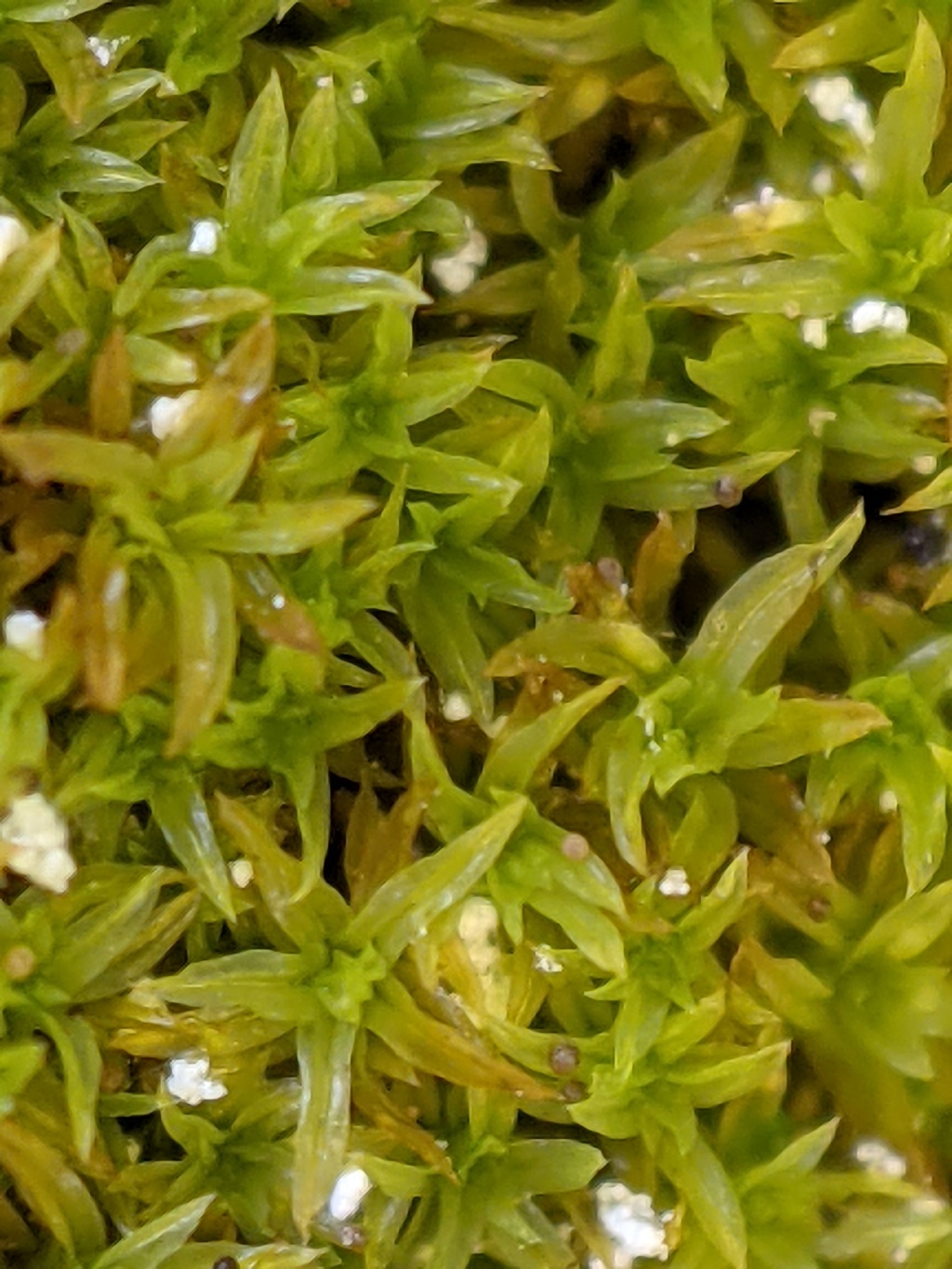Zygodon intermedius
Bruch & Schimp.Dioicous. Asexual reproduction occasionally by clavate, 3-celled gemmae on stems or in leaf axils. Dense tufts or mats on trees or rocks, 5–25 (–55) mm tall, green to yellowish green. Stems branched, yellow, with red rhizoids restricted to bases. Leaves erect-spreading or spreading when moist, loosely twisted around stem or erect-appressed when dry, lanceolate or linear-lanceolate, 0.6–1.8 mm long, 0.2–0.4 mm wide, slightly concave and undulate; apex acute; base somewhat decurrent; costa ending below apex; margin entire or rarely denticulate near apex, with teeth formed by part of the cell, plane or somewhat undulate, without a border; laminal cells in apical half rounded-hexagonal, ±isodiametric, 4–12 μm long, 4–10 (–15) μm wide, with 5–8 papillae per cell, gradually transitioning to basal cells at base; basal laminal cells quadrate or rounded-rectangular, 7–50 μm long, 5–15 μm wide, smooth. Perichaetial leaves lanceolate, with acute apices. Seta 2.5–10 mm long, yellow toward capsule, brown toward base, smooth, twisted anticlockwise. Capsules erect, pyriform, oblong or cylindric, 1–1.5 mm long, straight, yellow or light brown, with 8 deep ribs along length when dry. Peristome double or single; exostome teeth 8, short, sometimes reduced or absent; endostome segments 8, ±reduced. Operculum oblique-rostrate from conic base, 0.3–0.4 mm long. Spores 13–17 (–20) μm diam.
GleP, VVP, VRiv, GipP, OtP, WaP, Gold, CVU, GGr, DunT, NIS, EGL, EGU, WPro, HSF, HNF, OtR, Strz, MonT, HFE, VAlp. New Zealand, Africa, Asia and South America. Widespread along and south of the Great Dividing Range in a variety of vegetation types including sclerophyll forest, rainforest, coastal tea-tree and Melaleuca scrub as well among rocks in the alpine zone and beside creeks.
 Spinning
SpinningLewinsky-Haapasaari, J.; Ramsay, H.P. (2006). Zygodon, in McCarthy, P.M. (ed.), Flora of Australia 51, pp. 237–244. ABRS and CSIRO, Canberra and Melbourne.



